12 secrets to steal from the South Beach Diet
I tried this popular weight loss plan for 30 days—here's what I learned.
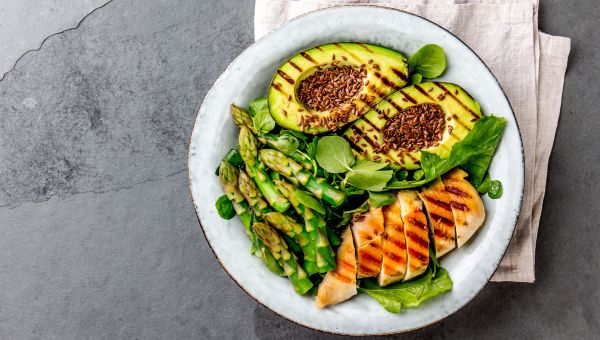
It seems like everyone is looking to slim down—myself included. As usual, I was in the market for a meal plan that would help me drop some extra pounds without too much extra effort. As timing would have it, my boss presented us with a challenge: choose a diet, stick to it for 30 days and document the experience.
I can’t turn down a challenge, and the… Show More
It seems like everyone is looking to slim down—myself included. As usual, I was in the market for a meal plan that would help me drop some extra pounds without too much extra effort. As timing would have it, my boss presented us with a challenge: choose a diet, stick to it for 30 days and document the experience.
I can’t turn down a challenge, and the buttons on my pants couldn’t afford another unhealthy meal, so it was set. I would try the South Beach Diet.
Here’s what this high-protein and lower-carb diet did for my body, mind and lifestyle.
Show Less

The 4-1-1
After committing to the 30-day diet, I realized I didn’t know all that much about the South Beach Diet. But there’s nothing the internet can’t teach you.
The South Beach Diet, created by cardiologist Arthur Agatston, MD, in 2003, has three phases: a two-week body reboot to banish cravings, which is… Show More
After committing to the 30-day diet, I realized I didn’t know all that much about the South Beach Diet. But there’s nothing the internet can’t teach you.
The South Beach Diet, created by cardiologist Arthur Agatston, MD, in 2003, has three phases: a two-week body reboot to banish cravings, which is the hardest part of the plan; guided eating for steady weight loss, where I really learned what I should (and shouldn’t) be eating; and an extended weight loss period.
Phase 1 prohibits most carbohydrates, good and bad, and focuses on protein, fat and non-starchy vegetables. Dairy is limited on the eating plan, in both phases 1 and 2. The second stage allows you to add some healthy carbs to your diet, like whole grains and fruit.
The third phase is aimed at changing your lifestyle. You apply what you learned in and out of the kitchen. The best part? You can eat anything you want—in moderation, of course.
Show Less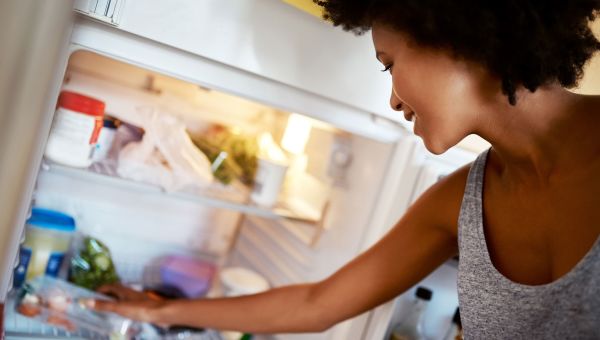
Clean out your kitchen
If you’re like me, you have no self-control when it comes to unhealthy snacking. The only surefire way I found to avoid these irresistible treats was keeping them out of my kitchen.
Before loading the refrigerator and pantry with South Beach Diet-approved eats, I purged the junk, shedding just a… Show More
If you’re like me, you have no self-control when it comes to unhealthy snacking. The only surefire way I found to avoid these irresistible treats was keeping them out of my kitchen.
Before loading the refrigerator and pantry with South Beach Diet-approved eats, I purged the junk, shedding just a tear or two. Not only did tossing the junk food work for me, but science says it works, too. Research suggests keeping food in an inconvenient location could slash your likelihood to indulge. If you’re not willing to trash some of your favorite treats, stash them in hard-to-reach places.
Show Less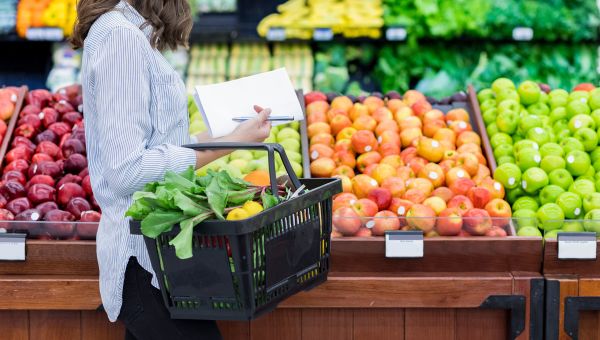
Plan ahead
Anyone who knows me will tell you: I love a good list. At any given moment, my daily and weekly plans are likely documented in at least three places. This diet took my scribbling habits to a whole new level.
Each week, I made a shopping list, a technique research suggests helps promote a healthy… Show More
Anyone who knows me will tell you: I love a good list. At any given moment, my daily and weekly plans are likely documented in at least three places. This diet took my scribbling habits to a whole new level.
Each week, I made a shopping list, a technique research suggests helps promote a healthy diet. My list included the makings of South Beach-friendly breakfasts, lunches and dinners and plenty of diet-approved snacks, like nuts, celery sticks, string cheese and sugar-free gelatin. Planning out my meals helped me stay on track.
To avoid waste and remove the temptation of transforming my wholesome ingredients into unhealthy eats, I created weekly menus. There are tons of South Beach-approved meal and snack options, but there are some restrictions, too. Certain foods, like fruit, grains, dairy and nuts are limited, so creating a menu ahead of time allowed me to plan a whole day—and even week—of eating without overdoing any food group.
Eating was as simple as taking a peek at my weekly menu, which I hung on the fridge, before reaching for my next meal.
Show Less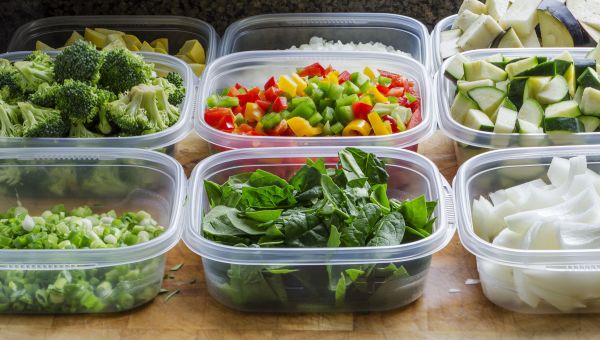
Prep, prep, prep
So, you’ve written your shopping list, created a weekly menu and loaded your kitchen with groceries. Now what? With a fulltime job and a lengthy commute to and from work, I don’t always have the energy to whip up a healthy, satisfying dinner. And since we’re sharing secrets, I can sometimes be lazy… Show More
So, you’ve written your shopping list, created a weekly menu and loaded your kitchen with groceries. Now what? With a fulltime job and a lengthy commute to and from work, I don’t always have the energy to whip up a healthy, satisfying dinner. And since we’re sharing secrets, I can sometimes be lazy—which makes ordering takeout much more appealing than cooking.
My solution: I spent a few hours over the weekend chopping, cooking and portioning my meals for the week. Some of my South Beach favorites:
- Baked egg casserole with turkey bacon, veggies and shredded cheese
- Pre-chopped cobb salads
- Lean ground turkey with sautéed spinach and chickpeas (approved only in phase 2)
Pro tip: Anything you’re able to cook in one pot, pan or baking sheet saves you time on cooking and clean-up.
Show Less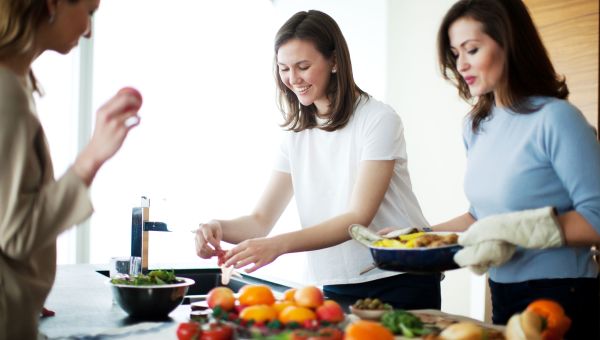
Enlist the help of a friend
Misery loves company, so I enlisted the help of my mom for this diet. I prepped meals for the two of us each week and forced her on the South Beach journey with me.
Having someone to commiserate with about cravings or an uptick on the scale was nice at times, but that’s not what makes this strategy… Show More
Misery loves company, so I enlisted the help of my mom for this diet. I prepped meals for the two of us each week and forced her on the South Beach journey with me.
Having someone to commiserate with about cravings or an uptick on the scale was nice at times, but that’s not what makes this strategy work for weight loss. Having a weight loss buddy helps keep you accountable for your actions. Each time I thought about reaching for a cookie, doughnut or equally unhealthy treat, I was reminded that missteps would not only derail my own efforts, but also betray by diet buddy.
Research also suggests teaming up with family and friends can help boost weight loss.
Show Less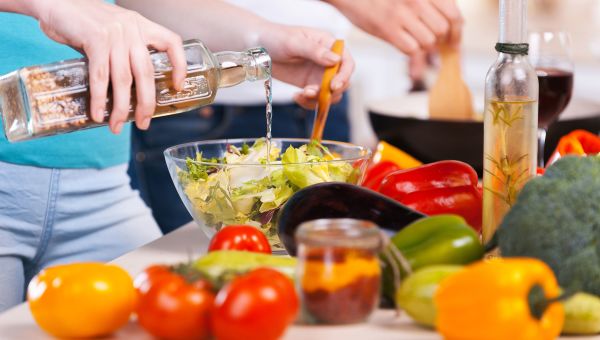
Enjoy your food by adding flavor
You’re not allowed to eat a family-sized bag of tortilla chips and an entire jar of salsa, but the South Beach Diet does give some wiggle room. On this plan, eating your “Extras” and “Free Foods” is encouraged. So, you can add a spoonful of fresh pico de gallo to your eggs or a splash of half-and-… Show More
You’re not allowed to eat a family-sized bag of tortilla chips and an entire jar of salsa, but the South Beach Diet does give some wiggle room. On this plan, eating your “Extras” and “Free Foods” is encouraged. So, you can add a spoonful of fresh pico de gallo to your eggs or a splash of half-and-half to your coffee without feeling guilty about it.
Extras are any foods or toppings with fewer than 35 calories and no more than 3 grams of carbohydrates per serving. Keep it to three servings per day. Free Foods are eats with fewer than 10 calories and 1 gram of carbs per serving.
Chicken breast and broccoli can get boring, especially when you’re eating it week after week. Spices, broths, sauces and toppings made my meals versatile and tasty, and kept me eager to stay on track. I enjoyed marinating chicken in balsamic vinegar, mixing mustard into my turkey burgers and topping my veggies with hot sauce.
Show Less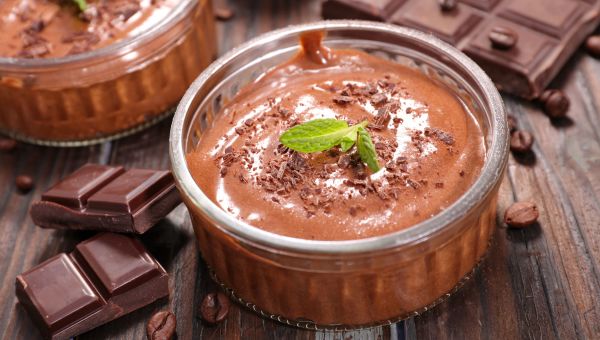
Keep sweet snacks on hand
I won’t lie to you, cutting fruit for the first two weeks of my diet was tough. Prior to my plunge into the South Beach Diet, I was eating roughly three cups of fruit a day. That’s more than the government recommendation of one and a half to two cups, but who’s counting?
I typically used fruit to… Show More
I won’t lie to you, cutting fruit for the first two weeks of my diet was tough. Prior to my plunge into the South Beach Diet, I was eating roughly three cups of fruit a day. That’s more than the government recommendation of one and a half to two cups, but who’s counting?
I typically used fruit to sate my cravings for sweets, but that wasn’t an option for 14 long days. Instead, I indulged in South Beach-approved snacks, like sugar-free gelatin and my favorite, “ricotta creme.” Whipping one-half cup of ricotta cheese with one teaspoon of vanilla extract or a tablespoon of unsweetened cocoa powder (or both) made a decadent, diet-friendly dessert.
Show Less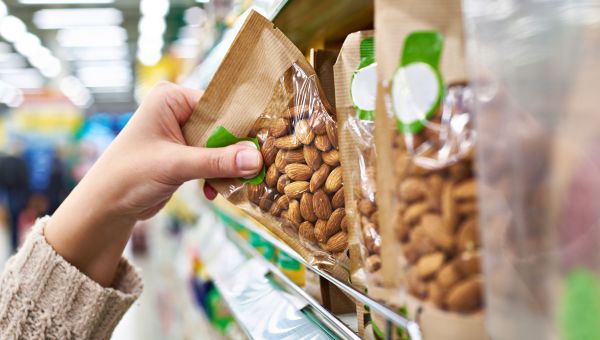
Go nuts
I snack constantly, so I was relieved to learn it’s OK—up to three times a day—by South Beach standards. Chips, crackers and candy are tasty treats, but they rarely give me the satisfaction of feeling full, but nuts do.
After researching the recommended serving size for some of my favorite nuts—… Show More
I snack constantly, so I was relieved to learn it’s OK—up to three times a day—by South Beach standards. Chips, crackers and candy are tasty treats, but they rarely give me the satisfaction of feeling full, but nuts do.
After researching the recommended serving size for some of my favorite nuts—almonds, cashews, hazelnuts and pistachios—I’ll admit, I was disappointed. How could 18 cashews fill me up? The secret is their fat content, about 12 grams in a single serving. Fat is slow to digest, so it helps keep you fuller, longer. And I promise, it works!
Show Less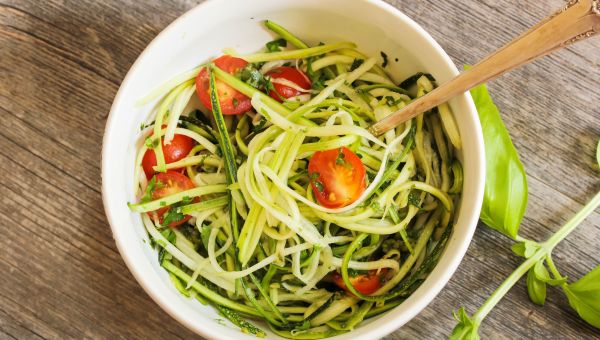
Find substitutions for your favorites
Carbs had been a staple in my diet, primarily quinoa, brown rice and oats, so I was disappointed to learn even healthy whole grains were off limits for a two-week period.
How did I satisfy my cravings for carbs? With alternatives like zucchini noodles and cauliflower rice. I topped lightly sautéed… Show More
Carbs had been a staple in my diet, primarily quinoa, brown rice and oats, so I was disappointed to learn even healthy whole grains were off limits for a two-week period.
How did I satisfy my cravings for carbs? With alternatives like zucchini noodles and cauliflower rice. I topped lightly sautéed veggie noodles with homemade tomato sauce to sate my craving for Italian cuisine and even drizzled soy sauce over cauliflower rice when I was in the mood for an Asian-inspired meal.
Show Less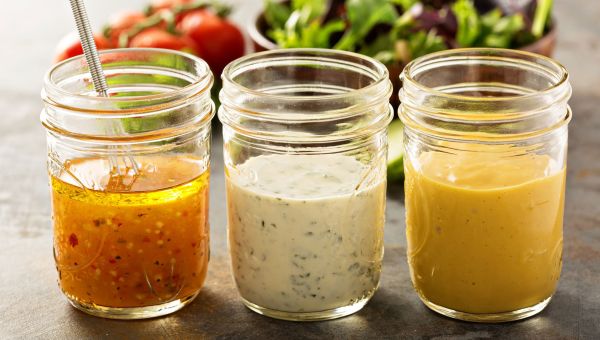
DIY your ingredients
Salads became a mainstay during my diet. A bowl of leafy greens and fresh veggies topped with lean protein was simple to throw together, filling and fit the diet’s guidelines.
What I struggled with was finding a tasty, diet-approved dressing. After staring into the fridge and spice cabinet, it hit… Show More
Salads became a mainstay during my diet. A bowl of leafy greens and fresh veggies topped with lean protein was simple to throw together, filling and fit the diet’s guidelines.
What I struggled with was finding a tasty, diet-approved dressing. After staring into the fridge and spice cabinet, it hit me—I could make a dressing myself. Over the course of my diet, I made several different dressings.
My favorites:
- Rice vinegar, natural peanut butter, lime juice and soy sauce
- Olive oil, red wine vinegar, Dijon mustard, black pepper and oregano
- Olive oil, lemon juice, salt, pepper and oregano
I concocted my own coffee creations, too! I combined a cup of coffee (hot or iced) with a teaspoon of vanilla extract, a teaspoon of ground cinnamon and a splash of almond milk to sate my cravings for sugary vanilla lattes.
Show Less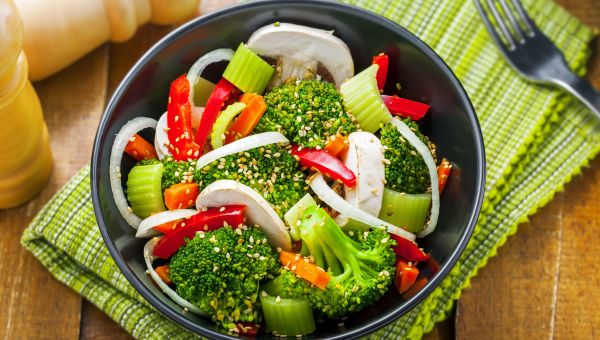
Be smart about your veggie choices
The worst part of dieting is feeling hungry, which used to send me running straight to the snack cabinet. Now, I fill up on veggies.
By volume, many veggies are low in calories, so you can eat a lot. On days I couldn’t seem to quell my hunger, I ate loads of low-calorie picks, like arugula, spinach,… Show More
The worst part of dieting is feeling hungry, which used to send me running straight to the snack cabinet. Now, I fill up on veggies.
By volume, many veggies are low in calories, so you can eat a lot. On days I couldn’t seem to quell my hunger, I ate loads of low-calorie picks, like arugula, spinach, cucumbers, celery and bell peppers.
Starchy vegetables, like sweet potatoes, are tasty—and allowed in phase 2—but tend to be higher in calories. If you’re looking to fill an empty stomach, non-starchy veggies are always best for conserving calories.
Show Less
Drink more water
It’s cliché, but it actually works. Drinking water throughout the day helped keep me full, so I ate less at meal time. Sipping on water also kept me energized.
I've long depended on caffeine for a quick energy boost—and don’t get me wrong, I still enjoy my coffee—but incorporating more water into… Show More
It’s cliché, but it actually works. Drinking water throughout the day helped keep me full, so I ate less at meal time. Sipping on water also kept me energized.
I've long depended on caffeine for a quick energy boost—and don’t get me wrong, I still enjoy my coffee—but incorporating more water into my daily routine gave me pep without a trip to the coffee shop.
Pro tip: Track how much water you’re actually drinking. It can be easy to lose track of how much more you need to reach your daily consumption goals.
Show Less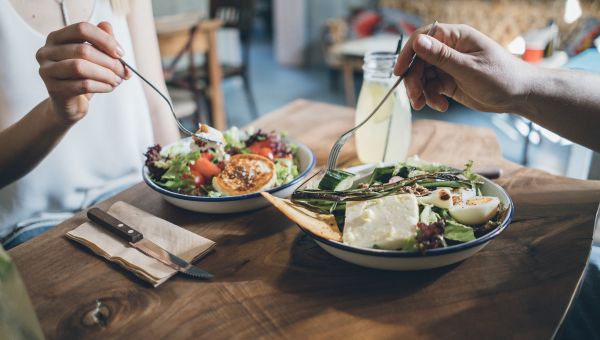
Be smart when ordering out
Eating out isn’t as difficult as you may think, and you don't have to miss out on gatherings, events and going out to dinner with friends and family because you're dieting.
I learned that many restaurants can accommodate your needs—you just have to ask. Another surefire way to stay on track while… Show More
Eating out isn’t as difficult as you may think, and you don't have to miss out on gatherings, events and going out to dinner with friends and family because you're dieting.
I learned that many restaurants can accommodate your needs—you just have to ask. Another surefire way to stay on track while eating out? Build your meal with three things in mind: protein, vegetables and fat.
Salads, with a base of diet-approved veggies and a serving of lean protein, are also great options, but be wary of the restaurant dressing. Favorites like ranch and raspberry vinaigrettes are loaded with sugar and calories. The diet allows two tablespoons of full-fat, oil-based dressing with no more than three grams of sugar per serving. Your safest best is asking for a side of oil and vinegar, and drizzling it on yourself.
And if you want a cocktail, go for it! During phase 2, you’re allowed two drinks each week. Just don’t send your diet off the tracks with sugary mixers. Vodka and club soda with a squeeze of lime was my drink of choice.
Show Less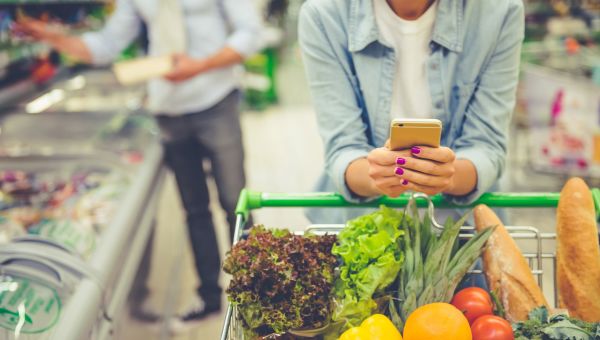
Life after South Beach
Although tough at times, the South Beach Diet was a good learning experience—and a quick way to drop a few pounds. Within days of cutting fruit, grains, sugar and refined carbs, the scaled tipped in the right direction. It was probably water weight, but it was encouraging! I ended my 30-day diet… Show More
Although tough at times, the South Beach Diet was a good learning experience—and a quick way to drop a few pounds. Within days of cutting fruit, grains, sugar and refined carbs, the scaled tipped in the right direction. It was probably water weight, but it was encouraging! I ended my 30-day diet five pounds lighter, but the journey isn’t over.
Lean protein and non-starchy vegetables are still a big part of my diet, but I don’t restrict the amount of fruits and grains I eat. And if I want a cookie or a cocktail, I have it.
Some South Beach-approved meals, like omelets, stuffed peppers and ground turkey taco salads, have become staples in my diet. But my favorite takeaway? Creating my own sauces and dressings! I’m no wizard in the kitchen, but the South Beach Diet helped push me out of my “store-bought” comfort zone.
Show LessMore On


video
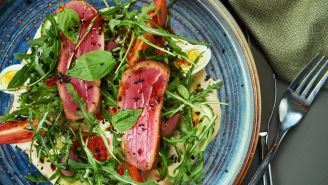
slideshow


video


video
